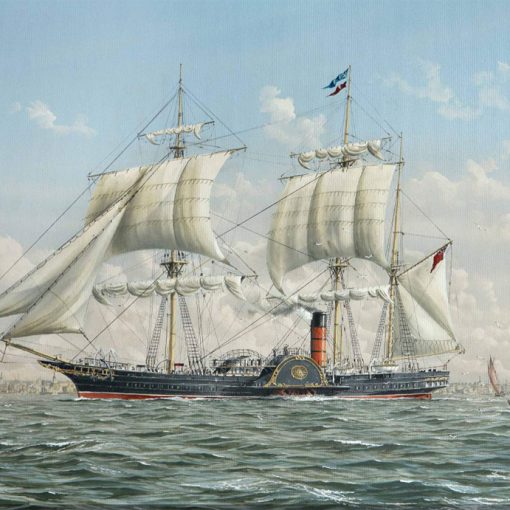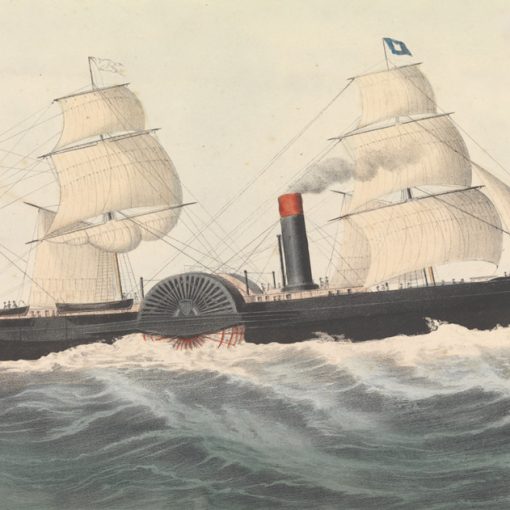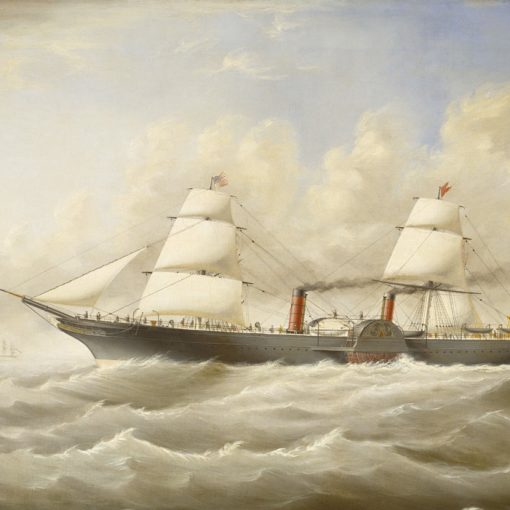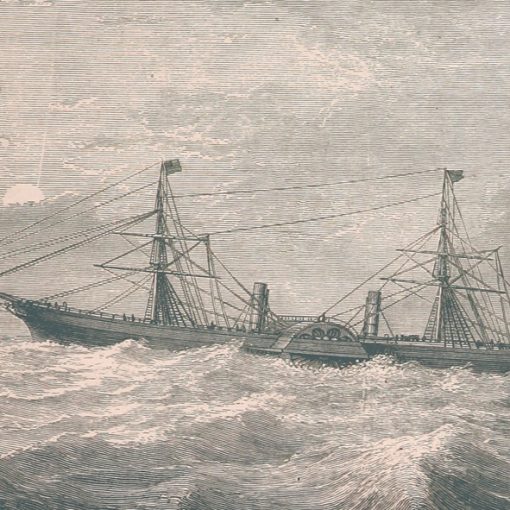1900 – 1925
Also known as Victoria Luise and Hansa
In order to snatch the Blue Riband of the Atlantic from Britain’s Campania and Lucania, the German shipping line Norddeutscher Lloyd, based at Bremen, commissioned the 14,000-ton Kaiser Wilhelm der Grosse in 1897. As that ship was able to maintain an Atlantic crossing time of above 22 knots, the Blue Riband was in Germany’s hands before the year’s end. The Kaiser Wilhelm der Grosse was the largest ship afloat, and her luxurious interiors attracted passengers from all over Europe. Her four funnels indicated safety and comfort for the average emigrant.
However, the Norddeutscher Lloyd was not the only German shipping line. The Hamburg-based Hamburg-Amerika Linie watched enviously as their arch rival’s Kaiser Wilhelm der Grosse took all the glory. Just as the rivalry between Britain’s Cunard Line and White Star Line, the German rivalry required a response from the other part. The Hamburg-Amerika Linie was not late in realising that to maintain their reputation they had to commission a ship to rival – and even outmatch – the Kaiser Wilhelm der Grosse.
Ordered in the late 19th century, the new ship entered service on July 4, 1900. Hamburg-Amerika Linie had christened the new liner Deutschland. At over 16,000 tons she was the largest vessel ever constructed after White Star’s 17,000-tonner Oceanic, not counting Isambard Brunel’s giant Great Eastern from 1860. The Deutschland had followed the Kaiser Wilhelm der Grosse’s trend and sported four funnels divided in pairs. Her quadruple expansion engines connected to the two screws made the ship possible to average 23 knots over the Atlantic. The Deutschland immediately took the Blue Riband in possession at her arrival on the scene. The Kaiser Wilhelm der Grosse proved too powerless to regain the prize, and there seemed to be no ship to threaten the Deutschland.
In the time of the century shift, the ocean liners were becoming ‘super liners’. This showed not only in size, but also in interior fitting. The Kaiser Wilhelm der Grosse featured such elegance and luxury that its like had never been seen on the high seas. The Deutschland had followed – and bettered – this. The Hamburg-Amerika Linie ship could explain her fittings with one word: vast. Even the vessel’s café had a squared glass dome in the high ceiling. This room became very popular among the passengers, but also the ship’s grillroom proved a success.
Even though a luxury liner, the Deutschland faced a common problem on board speed champions – vibrations. The rate of vibration at 23 knots was very disturbing among the passengers, and this resulted in a lower number of booked tickets. The Deutschland had the Blue Riband in her possession, but otherwise she had become a financial disaster.
In 1902, the Deutschland lost the Blue Riband to the newly commissioned Norddeutscher Lloyd liner Kronprinz Wilhelm. However, the Deutschland regained it the following year and kept it until the arrival of the British Cunard Line’s 31,000-tonners Lusitania and Mauretania in 1907. By then the Hamburg-Amerika Linie’s management had decided on aiming on size, stability and luxury only, not speed. That factor was left to the Norddeutscher Lloyd. By this the Deutschland was doomed. The truth was now that she was neither the largest nor the fastest any longer, and she had terrible vibration problems. This resulted in a complete refit in the years 1910-11. Her engines were replaced by far less powerful ones, to reduce the problem of vibration. The new task for the Deutschland was to cruise the West Indies, the Mediterranean and Scandinavia. The large ship emerged in 1911 as the luxury cruise ship Victoria Luise, with accommodation for 487 first-class guests. Her hull was painted in white, and she would receive the reputation of the finest cruise ship in the world.
The Victoria Luise remained in Germany during the hostilities between 1914-18. Due to engine problems she was not used as a troopship. When the war was lost in 1918, all of the major German liners were handed over to the victorious Allies, all but the former Deutschland. She was not of interest because of her operational problems. The impressive German fleet that had consisted of liners such as Kaiser Wilhelm der Grosse, Amerika, Kaiserin Auguste Victoria, Imperator, Vaterland and the newly launched Bismarck were either sunk or handed over. The Victoria Luise was all that remained. Germany had to start all over from scratch and rebuild their fleets. The next German ships of distinction were the two sisters Bremen and Europa who appeared in the shift 1920-30. Because of yet another world war, these two liners were also lost; the Bremen destroyed by fire during that war, and the Europa handed over to France, renamed Liberté.
The Victoria Luise survived for a short while into the twenties, but in 1921 she was refitted with two funnels and renamed Hansa. The Hansa was designed for the emigrant route, but as America had restricted its immigration-laws after the war, the ex-Deutschland was never fully satisfactory in her new role. In 1925, it was evident that the ship was old, and since no proper use could be found for her, she was instead sent to the scrappers in Hamburg that year.
Specifications
- 684 feet (209 m) long
- 67 feet (20.5 m) wide
- 16,502 gross tons
- Quadruple-expansion engines powering two propellers
- 22 knot service speed
- Passenger capacity of 2,050 people











